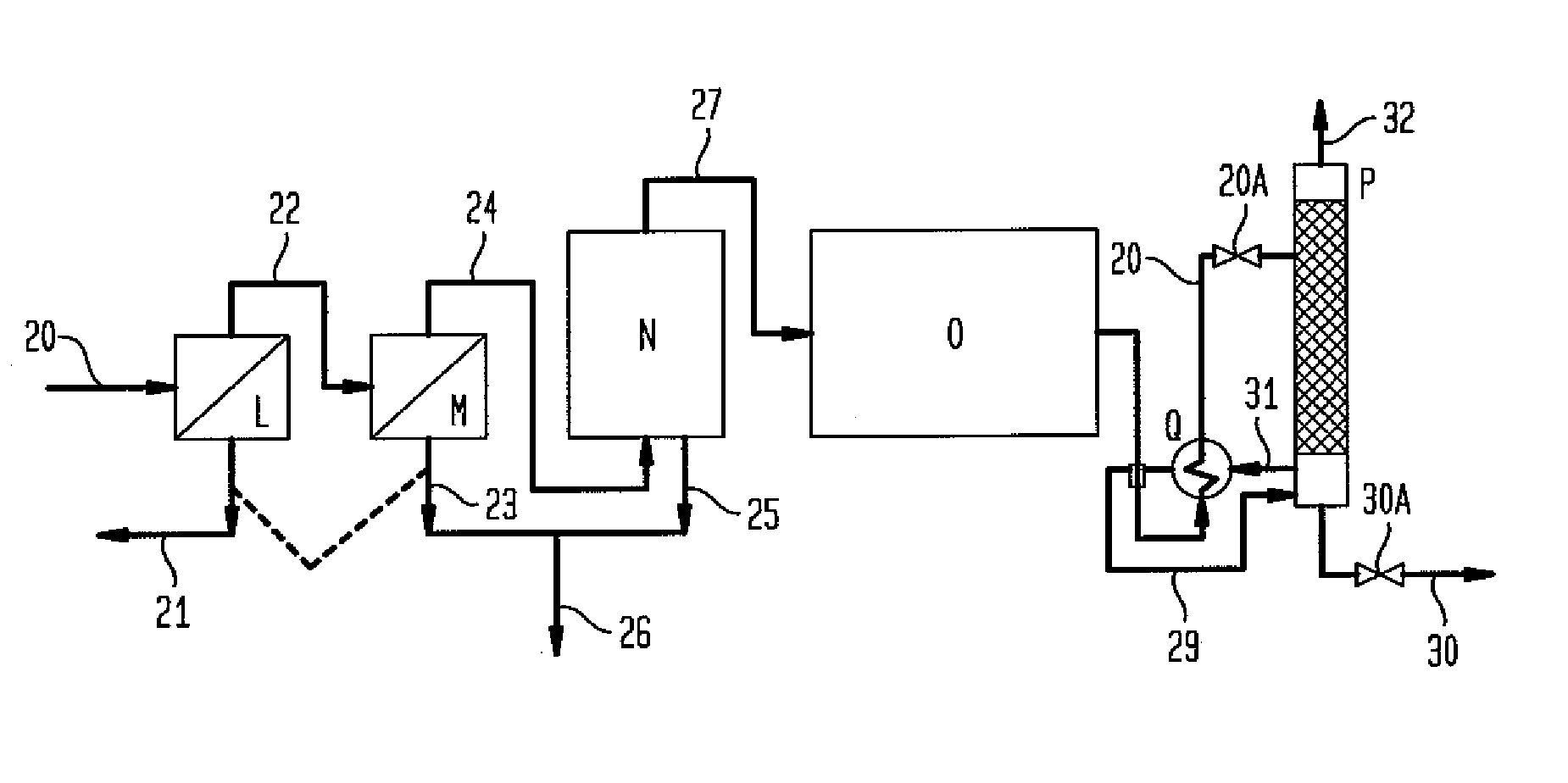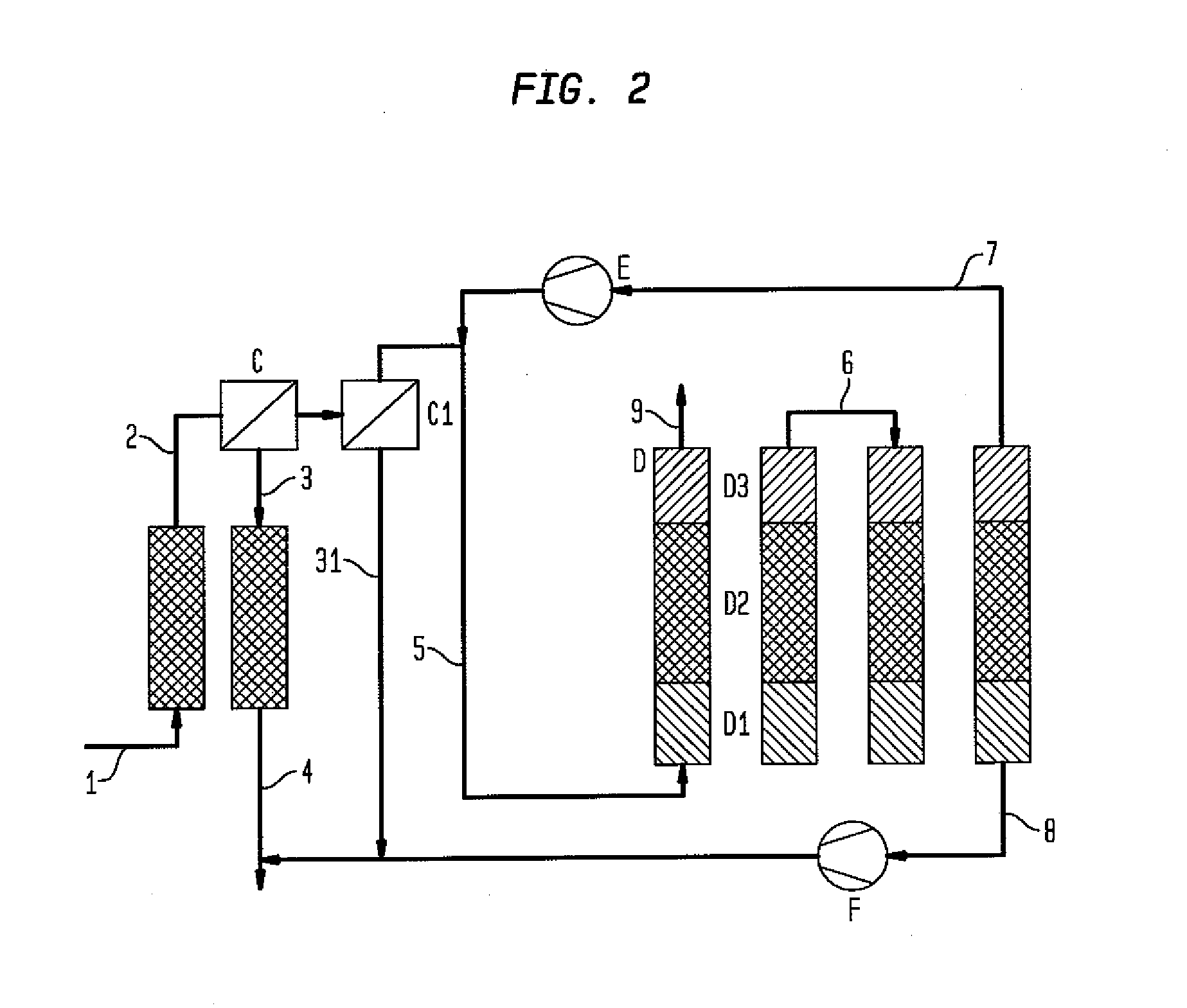Methods for removing contaminants from natural gas
a technology of natural gas and contaminants, applied in the direction of gaseous fuels, lighting and heating apparatus, separation processes, etc., can solve the problems of not providing bulk removal of oxygen and nitrogen from natural gas streams, and not also removing carbon dioxide, so as to reduce the amount of oxygen removal
- Summary
- Abstract
- Description
- Claims
- Application Information
AI Technical Summary
Benefits of technology
Problems solved by technology
Method used
Image
Examples
Embodiment Construction
[0021]Turning to FIG. 1, natural gas is fed through line 1 to the PSA dryer bed A where water in the natural gas is removed. The dry natural gas is fed through line 2 to the membrane carbon dioxide removal unit C where much of the carbon dioxide present in the natural gas stream is removed. The permeate gas is fed through line 3 to the other PSA dryer bed B where it will regenerate bed B. The operation of beds A and B in the PSA system is such that while bed A is adsorbing water, bed B is being regenerated by the permeate gas from the membrane unit C. When their roles are reversed, bed B will adsorb water from the natural gas stream and bed A will be regenerated by the permeate gas. The regeneration gas stream will leave bed B through line 4 and can be used for power generation.
[0022]The natural gas stream will exit the membrane carbon dioxide removal unit C through line 5 and be fed to the VSA system D. Each of the four beds present in the VSA system has three layers, D1, D2 and D3...
PUM
 Login to View More
Login to View More Abstract
Description
Claims
Application Information
 Login to View More
Login to View More - R&D
- Intellectual Property
- Life Sciences
- Materials
- Tech Scout
- Unparalleled Data Quality
- Higher Quality Content
- 60% Fewer Hallucinations
Browse by: Latest US Patents, China's latest patents, Technical Efficacy Thesaurus, Application Domain, Technology Topic, Popular Technical Reports.
© 2025 PatSnap. All rights reserved.Legal|Privacy policy|Modern Slavery Act Transparency Statement|Sitemap|About US| Contact US: help@patsnap.com



